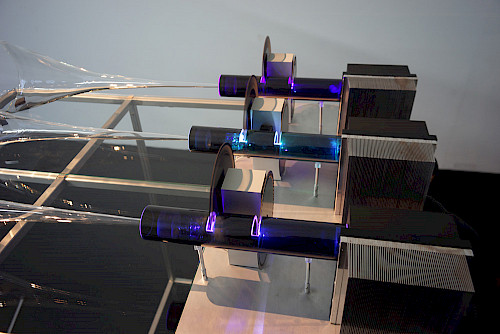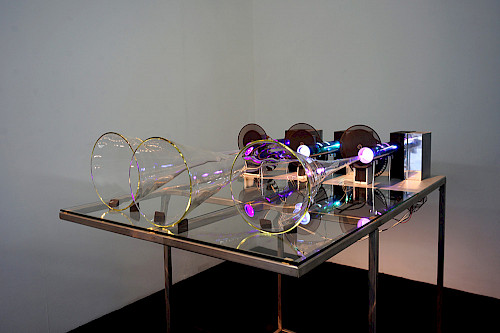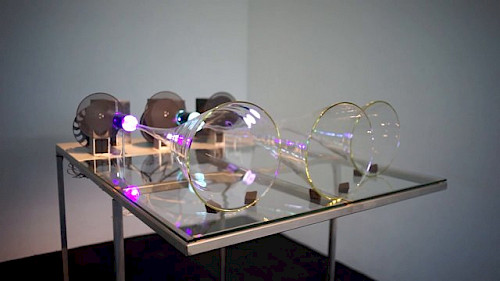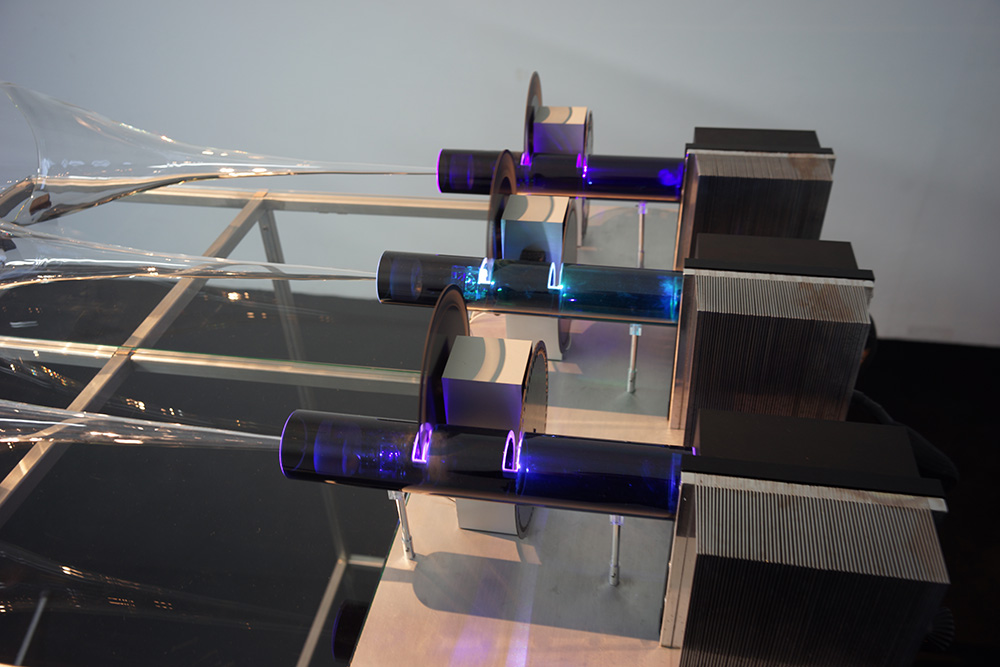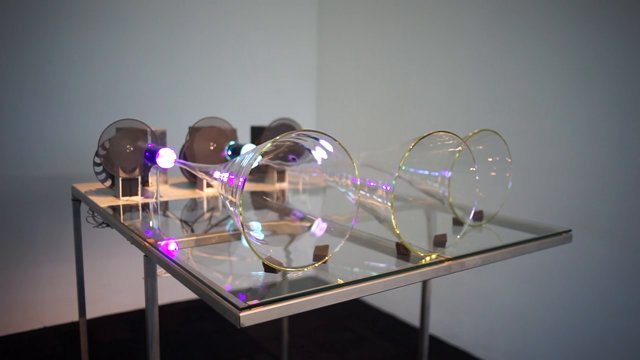Photophon, Aernoudt Jacobs, 2013
photophon is an installation based on intensive acoustic research of the photoacoustic effect. The photoacoustic effect is based on the phenomena of radiant energy. A strong light source can be converted into an sound wave due to absorption and thermal excitation. When rapid pulses of light are projected onto a sample of matter, they can be absorbed and the resulting energy will be radiated as heat. This causes sound waves due to pressure variations. The photoacoustic effect was discovered in the 19th by Alexander Graham Bell in his search for a means of wireless communication. He then used candlelight, sunlight, and the first forms of electricity in order to amplify sound. As an installation photophon will be displayed with a number of almost identical photophonic objects each playing a variable tone. These tones are created from independent white lasers that project their strong light-beams through a rotating disc which chops the beam into small fragments. The fragments will produce tones in each photophonic object. The tonality of the installation will have a constant shift in time and will have a changing vibrating micro-tonal structure. With this installation I'm mostly interested in achieving a sonic event from pure ephemeral phenomena. I am mesmerized by the idea that sounds around us can be created with light. The conclusion that can be made from Bell's notes and research is that any material has a sonority if you present a strong light-beam onto it. We know that every material has a resonant frequency but also every material can be 'activated' with light to 'sound' and this sound has a direct correlation to its resonant frequencies. Of course the shape of materials will also have a big impact, but this remains a side effect. For me this is quite an important revelation because it touches the world of sounds in its very essence. The sun radiates enough energy to produce sounds. You don't need to create a sound with a direct or physical contact. Sound can happen by itself without any direct physical contact. The utmost ephemeral aspects of sounds around us can be revealed with light. Also the fact that one can build a photo-acoustic cell from basic materials like copper and glass is a fascinating aspect for me. photophon is the first installment of a collaborative research with KU Leuven, Acoustics Lab. photophon is produced by Intro in situ and will première in Maastricht in September 2013 and is part of Resonance, the European Sound Art Network.
Concept: Aernoudt Jacobs Production: Intro in situ / Resonance Network In collaboration with KU Leuven, Laboratory of Acoustics and Thermal Physics Executive Production: Overtoon Thanks: FabLab.iMAL, Fablab Brussels, Bert Verstraeten, Christ Glorieux, Frank Kentie and Stéfan Piat With the support of the Flemish Authorities, Flemish Community Commission
Productions by Aernoudt Jacobs
- Infraultra 2020
- Contact 2020
- Heliophone 2015
- Induction Series #4.2 - Horseshoe 2015
- Induction Series #4.3 - Tin Space 2015
- Heliophone Drawings 2015
- Color Of Noise 2015
- The Photophon Principle 2014
- Induction Series #4.1 - Beam 2014
- Photophon 2013
- Induction Series #3 2012
- Sikuvalliajuq 2012
- Induction Series #1 2012
- Miniatuur 2011
- Glaz-Maton 2011
- Permafrost 2009
- Phantom Melodies 2006
- Leslie/History 2006

